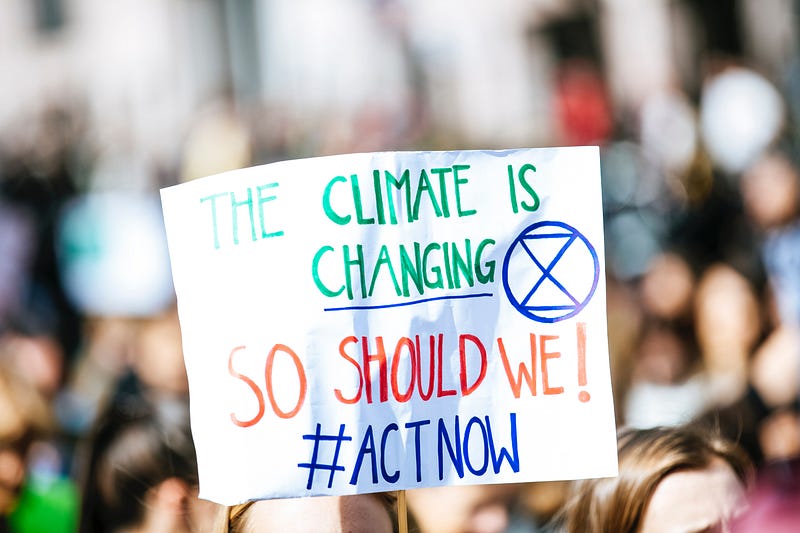The First Environmental Activist Killed by Law Enforcement in the U.S.
Written on

The United States has a well-documented history of suppressing dissent. The term ‘authoritarian’ is frequently used to describe geopolitical adversaries targeted for regime change, yet it is surprising how many educated individuals accept the simplistic dichotomy of ‘authoritarian’ versus ‘freedom-loving.’
While the U.S. does provide a semblance of free speech, voicing unconventional opinions on economic or foreign matters, or initiating grassroots movements for reform can lead to severe repercussions from those in power.
This pattern of targeting dissenters is especially prevalent against leftist movements. Historical examples include the FBI’s focus on civil rights leaders, anti-war activists, and environmental organizations, while overlooking groups like the KKK.
As noted by former FBI analyst Daryl Johnson, right-wing organizations often share values that align with those of state agents, especially concerning American exceptionalism, gun rights, and capitalism. Progressive movements that challenge these ideologies are frequently labeled as anti-American, making them prime targets for law enforcement.
The situation is worsening as citizens face increasing economic hardship and environmental crises. Those who advocate for change are now at greater risk from the full might of the security apparatus.
Post-9/11 anti-terror laws are being repurposed to monitor dissenters, a trend that should raise alarms nationwide. The relentless pursuit of activists during the Green Scare, the violent response to the Standing Rock protests, and the corporate-funded surveillance of the Line 3 demonstrations exemplify this disturbing trend.
In January, this troubling escalation was tragically highlighted by the death of Manuel Esteban Paez Terán, the first American environmental activist killed by police.
While there is no bodycam footage of the incident, a widely circulated image shows SWAT officers equipped with cameras. The protests aimed at protecting the South River Forest erupted following the announcement of a $90 million police training facility, dubbed “Cop City,” by then-Mayor Keisha Lance Bottoms.
The forest had previously been designated as vital for maintaining Atlanta’s tree canopy and as a potential new park. Despite this, the city council approved the facility, igniting the “Stop Cop City” movement.
In response to acts of vandalism by activists, including arson against construction equipment, Governor Brian Kemp labeled the protestors as “terrorists.” The Atlanta Journal-Constitution, the city’s largest daily, published numerous articles criticizing the activists without disclosing that its CEO was fundraising for the police foundation behind the training center.
Activists like Paez Terán, also known as “Tortuguita,” camped on the land to protest the destruction of the forest. Over the past year, the situation escalated with police raids, violence, and arrests.
On January 18, a significant police operation led to Terán's death. Officials claimed Terán fired at officers first, prompting them to return fire. However, other activists reported only hearing a single round of gunfire, raising questions about the official narrative. A recent private autopsy revealed that Terán was shot 13 times.
Following Terán's death, seven other activists were arrested, and environmental lawyer Steven Donziger indicated that the Georgia police possess footage of the incident's aftermath that has yet to be released.
In the wake of the killing, “Stop Cop City” protestors took to the streets. What began as peaceful demonstrations escalated into violence, leading Governor Kemp to declare a state of emergency and deploy 1,000 National Guardsmen.
While the issues of racist policing and police violence have gained visibility since the George Floyd tragedy, the concerns surrounding state repression and domestic surveillance remain under-discussed in mainstream conversations.
This cycle of violence has become disturbingly normalized in the U.S., as seen in the simultaneous fallout from the police beating of Tyre Nichols in Memphis. The historical legacy of COINTELPRO and the repurposing of anti-terror legislation for domestic surveillance must be openly debated, especially considering the targeting of progressive movements.
The Intercept highlighted that when a DHS report in 2009 warned of rising right-wing extremism, it prompted backlash from conservative factions, leading to the disbandment of the unit that produced it. Right-wing terrorism often aligns with the state’s objectives, while leftist ideologies face harsh scrutiny.
Statistics show that a vast majority of extremist-related murders in the U.S. are committed by individuals associated with right-wing movements. Conversely, animal rights activists and climate protestors are frequently labeled as domestic terror threats. In legal documents, “Stop Cop City” activists were described as “terrorists” for their peaceful protests.
The incident involving Manuel Esteban Paez Terán illustrates the escalating hostility towards those advocating for environmental justice.
> “Fascism should more appropriately be called Corporatism because it is a merger of state and corporate power.” – Benito Mussolini
This disturbing trend reflects a merger of corporate and state interests, as laws are enacted to criminalize peaceful protests and increase penalties for dissent. As the climate crisis intensifies and corporate interests dominate politics, the voices of the citizenry are increasingly stifled.
When a government fails to represent its people, what recourse do they have? With corporations posting record profits and exerting significant influence over legislation, citizens must consider their responses.
As regular Americans recognize their marginalization, the potential for civil disobedience grows. Peaceful protest remains a critical avenue for expression, but its future acceptability is uncertain.